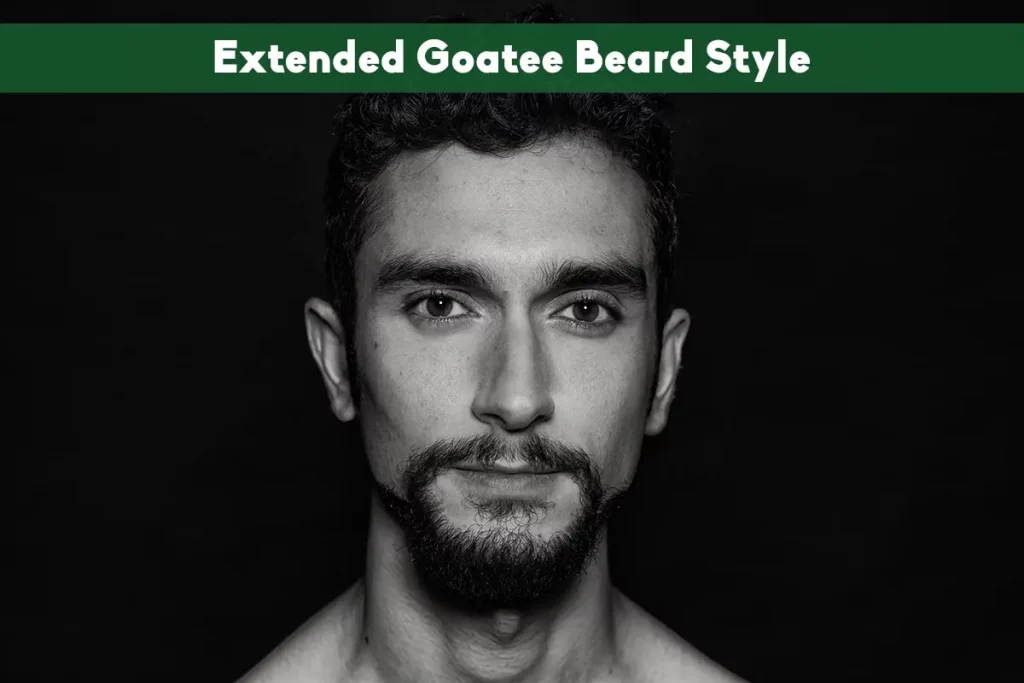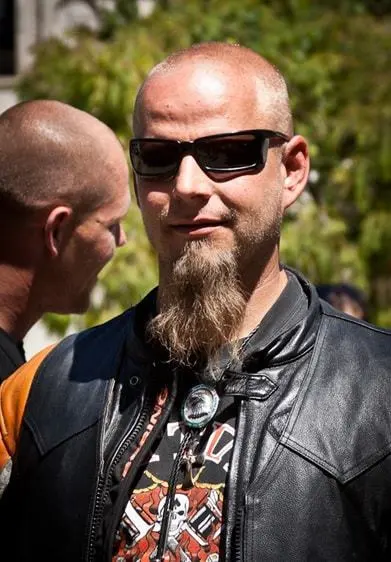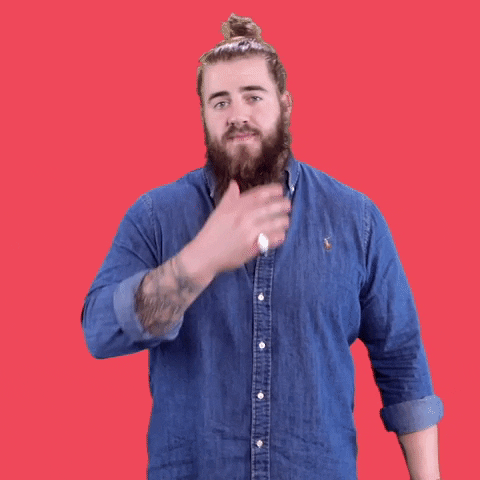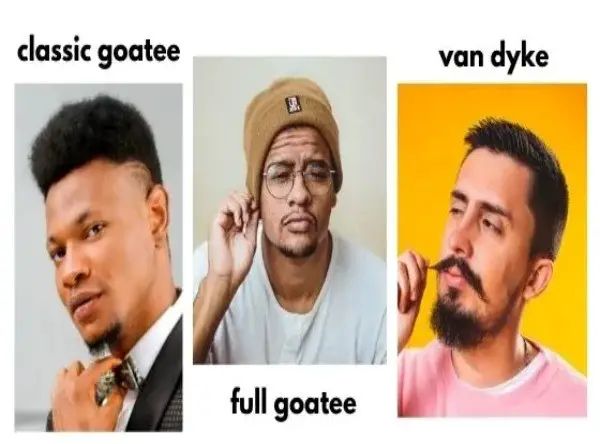We have all tried and copied certain trending beard styles from our favorite celebrities at some point. Plus, with the never-ending changes in the fashion industry, there are certain beard styles that have trended for years. And one of the beard styles that are loved by most folks that have been evolving and trending over the years is the pointed goatee.
But…
Have you ever wondered how a pointed goatee would look on you? And if so, would you like to know which goatee style will work for you?
Page Contents
What Is a Pointy Goatee?
Pointy goatees are unique beard styles that feature V-shaped beard tufts on the chin. But the beards on the chin, neck region, and cheeks have to be well-groomed, with the chin hair being longer and groomed to a point. While this beard style has been accepted for the last few years, it has been part of our culture for centuries.
Initially, the long pointy goatee was associated with the Greek Satan and Pan in ancient times.
The pointed goatee was first accepted into popular culture in the seventeenth century when Anthony Van Dyck started sporting this look.
Currently, the pointed goatee is considered a mid-way approach between a full beard and a mustache. In fact, the term "goatee" originated from the fact that it resembles a goat's chin. Originally, the point of this style met at the base of the beards.
However, today the V-shaped goatee comes in several shapes and forms – short, narrow, wide, and long. They also are different in tidiness, texture, and depth.
Modern-day studies have shown an element of danger associated with folks with an inverted triangle shape. In fact, the pointed goatee styles have been associated with an element of danger for years, but currently, it portrays an image of rebelliousness and daring. It is also used to depict some folks' smartness, class, and intellect.
Therefore, if you're tired of sporting a common beard style and want something edgy to make you the center of attention, you should try a pointy beard.
What Are the Different Great Pointy Goatee Beard Styles You Can Try?
A pointed goatee is a style that includes hair on your chin and not on your cheeks. The pointed beards may include a mustache; some of the modern goatee definitions include mustaches. But the underlying principle is that you should never leave any hair on the cheeks.
But certain pointed beard styles require you to leave some hair on the chin; however, they should be shorter than the chin beard. Some of the most common pointed beards include:
1. Disconnected Mustache and Pointy Goatee
This type of pointed goatee includes a chin beard and a mustache, but the chin beard is normally sculpted to a pointy shape. The V-shape chin beard usually takes a glorious center stage.
However, the mustache is distinct from the beards; they're not connected after all. This pointed goatee beard style resembles the original Van Dyke beard but without the handlebar mustache. This goatee style is ideal for guys whose chin, beards, and mustache don't connect.
2. Pointed and Extended Goatee Beard Style

A pointed and extended goatee is an extended beard style with the sides leading to the V-shape point. Remember, just because it's referred to as a V-shaped beard, it doesn't mean that the sides should not be straight and meet at an acute angle.
The sides of this style are usually cupped, with the V-shaped point being gentle and slightly rounded.
The sides usually tail backward along your jawline with the extended goatee, but not too far back to be considered chinstraps. This pointed beard style helps define and contour your jawline, but it does come with more trimming requirements.
3. Fade to a Point
This style allows you to fade your cheek hair perfectly into your goatee, and it can be either profound or subtle. This style works perfectly, and it can help draw attention to you.
The cheek hairs are usually faded from short to long as they approach the sides of the goatee via the cheek line.
Remember, the longer the chin hair, the more pronounced your style. With this style, you will have to do more maintenance and trimming work; after all, fading your beards from long to short can be challenging and may take time. Therefore, you may have to use a pair of clippers.
Unfortunately, folks have wondered why this pointed goatee style is referred to as a goatee when you leave some hair in your cheeks. And there are lots of people with different opinions on this beard style, but the goatee style takes effect when the length of the chin is longer than that of the cheek sides.
4. Long Traditional Pointed Goatee

This pointed beard style may seem outdated, especially when not groomed, but it is worth it. With this pointed beard style, the hair is only left on the chin, and the fun part is that you won't need a mustache either.
This pointed beard style represents goatees in their purest form, which was very famous between the 1940s and 1950s when this style dominated the art scene in California.
The long traditional pointed beard style may include a little chin puff, or it may be longer with a pointier tuft. And the good thing about this style is that it's very easy to maintain; after all, maintaining a single tuft can be quite straightforward.
All you have to do is trim it to prevent it from overgrowing, and every day you can oil it, comb it and then brush it. Remember, trimming the sides can leave the point pronounced and look natural.
5. The Braided Goatee

The braided goatee is ideal for folks with long chin beards looking for a new style. All you have to do is knot your long chin beard into a braid. This pointed beard was a perfect throwback to the Nordic period when the Vikings ruled the seas.
How to Grow a Pointed Goatee
You might want a luscious long ducktail beard or a small, pointed tuft, but it doesn't matter since the core principles are the same:
- Decide what you plan to do with your facial hair, including the sides and cheek hair.
- Trim the sides of your beard to create a gentle ducktail beard, leaving a rounded tip
To create an exceptional ducktail beard goatee, you should do the following:
1. Grow Out the Hair on Your Chin
Before you even think about sculpting your facial hair to a pointed beard, you first have to let it grow to the desired length, which varies with individuals. You may have to put up with an untidy beard until it reaches your desired length. Brushing it regularly will do more than just train the beards to grow down; it will keep it flat and neat as it grows.
Remember, our beards don't grow to a point; instead, they grow downwards and meet our chin that grows outwards.
Therefore, your beards are always broad and bushy, so your work is to sculpt them and create a narrow V-shaped beard.
2. Trim Your Cheek Hair
After the beards have grown to the desired length, you can finally decide what to do with the cheek hair. If you plan on keeping the mustache and cheek beard, then your work may be very simple since you won't be trimming them.
If you don't want to keep the cheek hair, you should trim it off using the naked blade of the hair trimmer and cut your hair down completely. The trimmer will leave you with hair that is about 0.4mm high.
Alternatively, if you plan to keep some cheek hair, you should set your clipper to the required hair length and trim the cheek beard. But make sure the cheek hair is shorter than the goatee (mustache and chin beard).
Make sure you trim it to the shape of the goatee and visualize the outline of your goatee's sides while trimming it.
After all, the sides are an extension of the goatee; all you have to do is follow the mustache's curve downwards for a natural-looking pointy goatee.
If you're searching for nuance or complex style, you should fade the cheek hair as you move from the sides to the cheek lines. To achieve this, you should shorten your hair as you move outwards.
You can also split your cheek hair into three parts and reduce the clipper grade while moving towards the cheek line. This can be a bit complex, so you may have the barber do it while you're watching, and once you're comfortable, you can work on your beards at home.
3. Trim the Fully Grown Chin Beard to a V-Shape
During this phase, you can start shaping the sides of your goatee to a V-shape using a beard comb. Hold the chin beard sides using the comb and create a V-shape. The comb will help hold the beard in place while you're trimming.
You can trim the chin beards using the naked blades of the clipper or a pair of scissors. And to get a perfect V-shape, you can comb the beards downwards frequently.
Remember, your main goal is to make the sides as angular as possible as they approach the meeting points.
If you don't like the idea of using a comb, you can try doing it without the comb, but you have to be very careful and avoid trimming too much into the chin beard. After a while, you will start noticing the sides starting to shape up as opposed to the initial square, broad chin beard.
The final shape will depend on you, so you can make it too pointy, but this can look unusual on some folks. But don't forget to give a tip a rounded edge using your scissors.
Finally, you can get rid of the stray hairs that are sticking out for a perfect V-shaped beard. To do this, all you have to do is brush the naked blade of the trimmer on the surface of the goatee; remember, you don't want to trim the bulk of the beard. All you're trying to do is catch the tips of your beards that are sticking out.
4. Neaten up Your Mustache
The mustache is a crucial part of some goatee styles; therefore, after working on the cheek and chin beards, you should proceed to trim the mustache. You may want to remove the mustache completely or just a bulk of it for some styles.
For most styles, you only need to trim the stray hairs that may creep into your mouth using either a pair of scissors or trimmers.
Make sure you trim the mustache perfectly without letting any hair creep over the upper lip. You should keep a neutral expression like a slight smile and look ahead when doing this. After you have finished, you can tilt your head downwards and examine the mustache.
5. Define the Neck Part
With your goatee well-trimmed, your neck will show more; therefore, you must trim the neck. You should define your neckline and get rid of the neck stubble.
Remember, a great neckline should be 2 finger-widths above your Adam's apple.
Therefore, you should let the angle follow your jawline to either side of your head, but most importantly, don't let it go too high. Finally, you can trim everything below the neckline using the trimmer's naked blade.
6. Shave Your Facial Hair to Perfection
The most crucial part of this process that needs to be trimmed is the neck; therefore, you must shave the region below your neckline.
You can use a safety razor, a straight razor, or a manual razor, but make sure you keep your skin moist to avoid irritation.
Don't forget to use the shaving gel. If you want to keep the cheek beards short, you should also shave them. If you get rid of all your cheek hair, you will end up with a smoother and slicker goatee.
7. Apply Beard Balm to Your Ducktail Beard

Finally, you can wash your beards and towel dry them before applying some beard balm. The beard oil will help moisturize and nourish your new pointy goatee. A little beard balm can go a very long way to accentuate your new pointed beard style. It can help flatten any stray hair and keep the pointed beard well the whole day.
But most importantly, don't forget to moisturize your skin after a heavy-duty shaving and trimming session. And if your skin is irritated, then the moisturizing cream can help soothe it.
Dapper Point: Read this comparative article we did on two popular goatee styles most men get interested in having -- Van Dyke Beard Vs Goatee.
Watch This!
Frequently Asked Questions
How Far Below My Chin Should the Pointed Beard Go?
The length of the goatee varies with individuals and the distance between your goatee and Adam's apple should fit two fingers. Remember -- with a longer goatee, you can even try the French fork beard style.
How Long Will It Take to Grow a Goatee?
Ever since it was popularized by Anthony Van Dyck goatees have evolved into a number of styles that vary in length. Therefore, the length is determined by the goatee style you select.
Depending on your genetics, you should expect it to take about a month for full coverage. After all, some men tend to grow their beards faster than others. On the other hand, some guys can't grow full, thick facial hair.
How Can I Keep the Goatee Neat?
You should trim the pointy beards at least once every week for them to remain neat and well-sculpted. It's also crucial that you wash it once every 2 to 3 days to remain well-groomed and fresh. A normal conditioner can give you an easy-to-style and smart beard.
Conclusion
The pointed goatee is one of the best beard styles that hasn't gone out of style for centuries. In fact, we can trace its origin to ancient times when it was associated with the Greek Satan. This beard style was even popular among the Vikings, but the current style was popularized by Anthony Van Dyck in the seventeenth century.
Currently, there are different types of pointed goatees to try, so you can look for an option that can improve your face shape. Trimming it is not that hard; all you have to do is ensure that you have long chin beards. Plus, you don't necessarily have to shave off your mustache and cheek beards; all you have to do is ensure that they're shorter than the chin beard.



